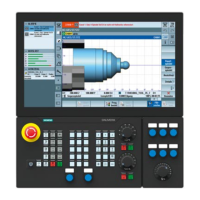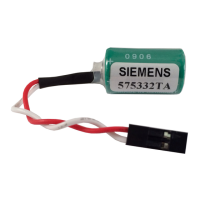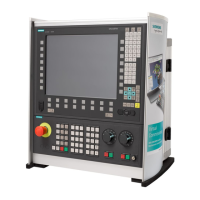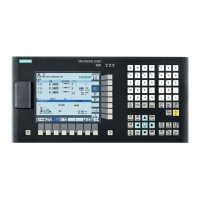© Siemens AG All rights reserved. SINUMERIK, Manual, 5-axis machining
Introduction
Contents
0
5
Page
1 Basic information ................................................................................................................ 7
1.1 Introduction ..................................................................................................................8
1.2 Requirements of 5-axis machining ..............................................................................9
1.3 Linear axes, rotary axes and kinematics ...................................................................10
1.4 Surface quality, accuracy, speed ..............................................................................14
2 General information on workpiece production................................................................ 17
2.1 Process chain for producing 5-axis workpieces ........................................................18
2.2 CAM system ..............................................................................................................19
2.3 Program structure for 5-axis machining ....................................................................21
2.4 Introduction - Measuring in JOG and AUTOMATIC ..................................................23
2.5 Setting up and measuring workpiece in JOG ............................................................24
2.6 Measure tool in JOG .................................................................................................27
2.7 Measure workpiece in AUTOMATIC .........................................................................30
2.8 Measure tool in AUTOMATIC ....................................................................................33
2.9 Checking/calibrating the machine with the kinematics measuring cycle CYCLE996 35
2.10 Quick View / Fast display ..........................................................................................37
2.11 ShopMill - Graphical interface ...................................................................................38
3 Key functions for 5-axis machining.................................................................................. 39
3.1 Introduction ................................................................................................................40
3.2 Explanation of the terms swivel, frames and TRAORI ..............................................41
3.3 Transforming coordinate systems - Frames ..............................................................42
3.4 Swivel - CYCLE800 ...................................................................................................44
3.5 TRAORI 5-axis transformation ..................................................................................46
3.6 High speed settings – CYCLE832 .............................................................................63
3.7 Tool radius compensation with CUT3D .....................................................................73
3.8 Volumetric compensation system (VCS) ...................................................................76
3.9 VNCK - Virtual machine ............................................................................................77
4 Aerospace, structural parts .............................................................................................. 79
4.1 Special functions for structural parts .........................................................................80
4.2 Programming example for the pocket on a structural part ........................................81
5 Driving gear and turbine components.............................................................................. 85
5.1 Special functions for driving gear and turbine components .......................................86
5.2 Example: Turbine blade ............................................................................................87
6 Complex free-form surfaces.............................................................................................. 91
6.1 Special functions for free-form surfaces ....................................................................92
6.2 Example: Milling a manta ray ....................................................................................93
0 Introduction
Contents

